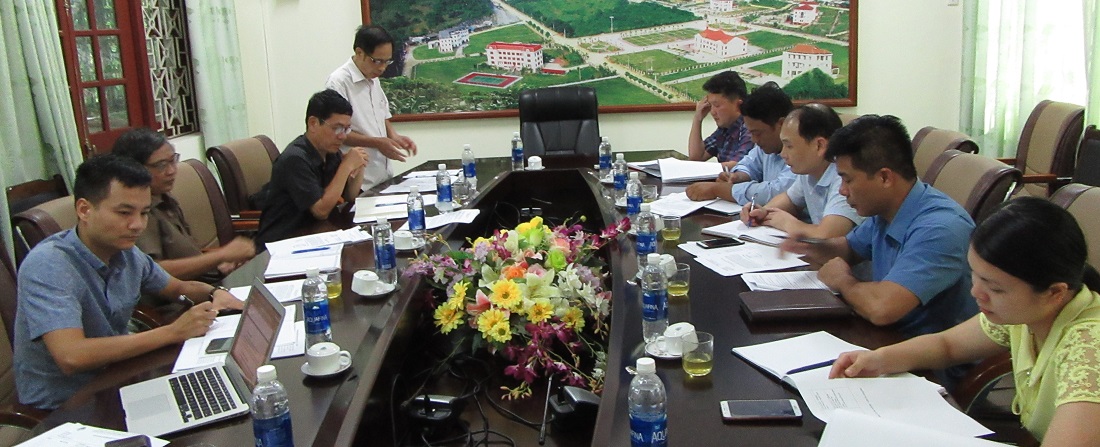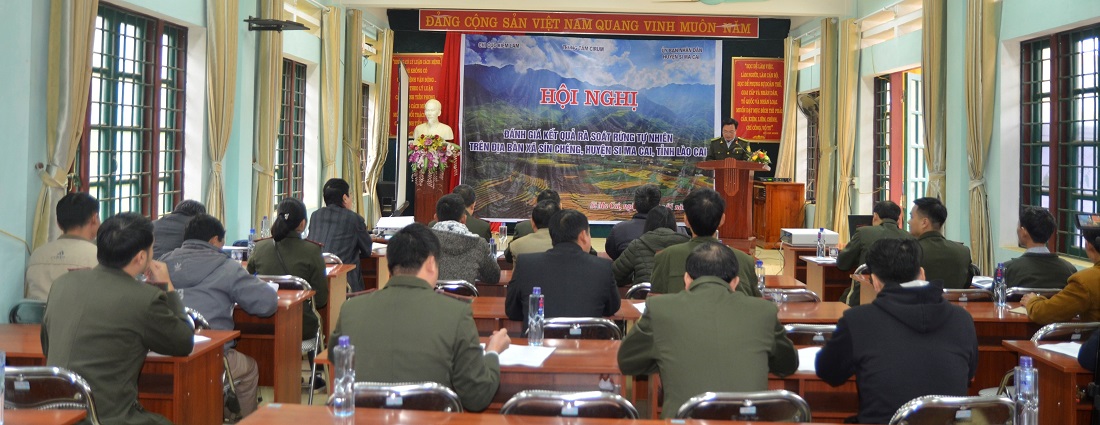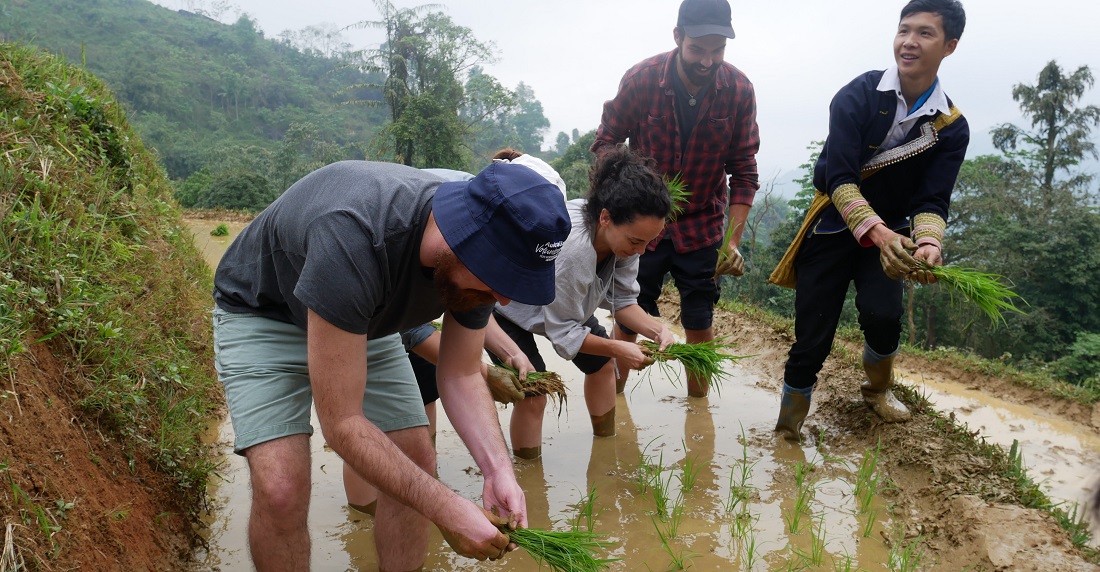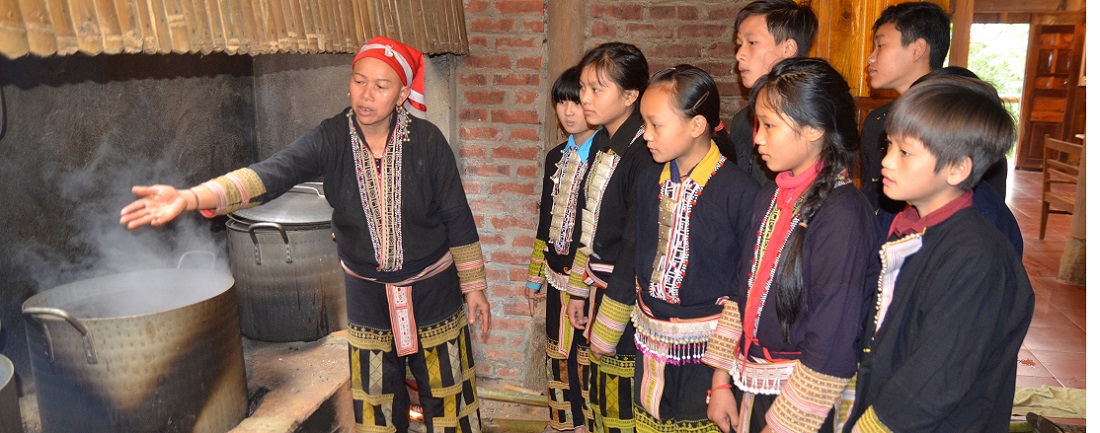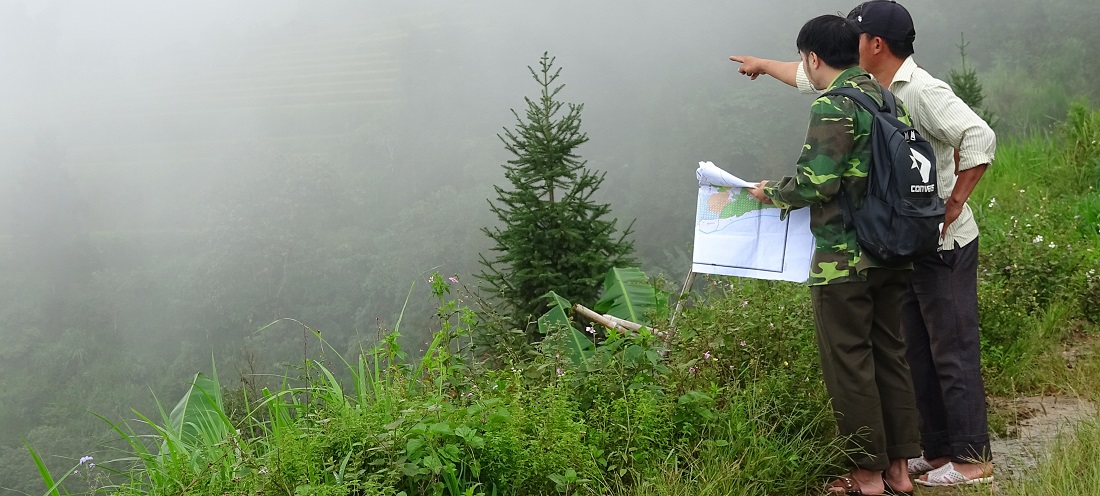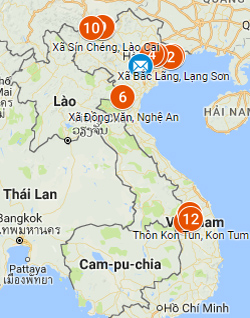Gender empowerment is critical for sustainable livelihood development. Ethnic minority (EM) women in the mountainous areas of Vietnam are often excluded from decision making at their homes and in their communities. CIRUM seeks to strengthen EM women’s position in society and improve smallholder’s livelihoods based on forest resources. To do so, CIRUM organized a participatory workshop for EM women and men from the Simacai district to discuss the potential of forest-based and women-led livelihood development models for generating stable incomes.
To start the workshop, the participants watched CIRUM’s own educational video “Out of the house and into society”. The video gave various examples of EM women who take leading roles in local organizations in different parts of Vietnam. Those women overcame a number of barriers from family and community to have their capacity realized. It was hoped that the participants become inspired to know that EM women elsewhere are confident to step out of their homes and contribute to social development.
Speaking at the workshop, Lung Thi Mai, Sin Cheng village’s women union leader said “Although now women and men have more equal rights, it is still more difficult for the women to participate in social activities because they have to share their time to manage both housework and social work”.
“In my village, parents are better aware of gender equity. They send their daughters to school because they believe that education makes their children more confident and successful” Giang Thi Chung, an EM woman from Thao Chu Phin village, added.
In the second part of the workshop, the participants worked in small groups to identify crops and animals from which EM households are able to generate better and more stable incomes for their households. Quite a lot of options were mentioned; however, indigenous fruit and animals such as Ta Van plum, H’mong pig, H’mong chicken, Sin Cheng duck and buffalos were desired the most to lift household income.
 Discuss on potential crops and animal for livelihood development/Photo: CIRUM
Discuss on potential crops and animal for livelihood development/Photo: CIRUM
The participants then analyzed and evaluated contemporary advantages and disadvantages; in terms of market, resources, gendered labour contribution and production for future investment, of cultivating the desired crop and animal, and proposed interventions for scaling up. The discussion found that those fruit and animals selected to earlier are readily available and suitable to the local environment. However, production size is still small due to limited land resources and poor inputs. Farmers do not collaborate with each other, but cultivate individually causing fluctuating and low prices. Additionally, unequal participation of men and women in decision making causes poor production.
Group analyzes pros and cons of investments in Ta Van plum plantation/ Photo: CIRUM
A woman presents her group discussion/ Photo: CIRUM
In order to achieve sustainable production, participants suggested that a thorough plan of forest-based livelihood development, which takes EM farmer’s capital and resources into account, is needed. Farmers work more effectively as cooperatives that support each other. Pilot models of forest-based livelihood development that are led by women should be promoted.
“This workshop is a good start for the journey towards sustainable forest-based livelihood development in Simacai district. We need technical as well as financial support from NGOs and local governments to accomplish the goal” Giang A Su, FFS Simacai coordinator, said.
At the end of the workshop, the participants chose their preferred crops to invest in. The next step in their work is bringing those crops to fruition. Participants brought this next task back home to discuss with their husbands or wives. CIRUM expects to see the participants at a workshop in the future to discuss further production plans for the selected indigenous crops.

 Group analyzes pros and cons of investments in Ta Van plum plantation/ Photo: CIRUM
Group analyzes pros and cons of investments in Ta Van plum plantation/ Photo: CIRUM A woman presents her group discussion/ Photo: CIRUM
A woman presents her group discussion/ Photo: CIRUM





